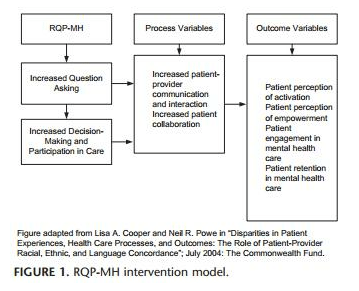The Right Question Institute’s work spans the fields of education, health care, school-family partnership, and democracy. To support our initiatives in these areas, we publish books, articles, blog posts, research, and make media appearances.
Books
Partnering with Parents to Ask the Right Questions: A Powerful Strategy for Strengthening School-Family Partnerships (ASCD: 2016) by Luz Santana, Dan Rothstein, and Agnes Bain
Partnering with Parents to Ask the Right Questions on ASCD.org
Make Just One Change: Teach Students to Ask Their Own Questions (Harvard Education Press: 2011) by Dan Rothstein and Luz Santana
Make Just One Change on Amazon.com
Education Articles
Using the Question Formulation Technique to Guide Primary Source Learning by Ashley Melville and Andrew P. Minigan (2018, April 24). EBSCOpost.
Response: Instructional Strategies That Teachers Might Be Missing by Dan Rothstein, David Jacob, and Greg Brown (2018, January 30). Education Week.
Facilitating Student Curiosity: Strategies and Resources by Andrew P. Minigan (2018, January 25). Education Week.
Inquiring Minds: Using the Question Formulation Technique to Activate Student Curiosity (click to download) by Andrew P. Minigan, and Joshua Beer (2017). New England Journal of History. We encourage you to check out the many other articles and resources offered by the New England History Teachers Association and their journal New England Journal of History.
Response: Ways to Use Questions Effectively in the Classroom by Dan Rothstein (2017, November 18). Education Week.
Stimulating and Sustaining Inquiry with Students’ Questions (Click to download) by Andrew P. Minigan, Sarah Westbrook, Dan Rothstein, and Luz Santana (2017, October). Social Education.
How Questioning Can Drive Arguments, Productive Debate & Information Literacy Among Students by Sarah Westbrook (2017, June 16). EBSCOpost.
The Importance of Curiosity and Questions in 21st-Century Learning by Andrew P. Minigan (2017, May 24). Education Week.
Creating Equitable and Curiosity-Filled Classrooms through Students’ Questions by Andrew P. Minigan (2017, April 18). Center for Collaborative Education.
Response: Dos & Don’ts of Implementing New Ideas in Education by Dan Rothstein (2017, March 25). Education Week.
Build STEM Skills and Nurture Students’ Scientific Curiosity With the Question Formulation Technique by Andrew P. Minigan (2017, February 22). EBSCOpost.
Education Week Spotlight on Inquiry-Based Teaching and Learning (2017). Education Week.
Cultivating Curiosity by Deliberately Teaching Students How to Ask Questions by Andrew P. Minigan (2016, October 7). Education Week.
Response: Metacognition is a ‘Catalyst for Action’ by Dan Rothstein (2016, October 3). Education Week.
Learning to Ask Questions: A Pathway to and Through College for Students in Low-Income Communities by Luz Santana (2015). About Campus, 20, 26-29. (subscription required.)
Making Questions Flow (Click to download) by Dan Rothstein, Luz Santana, and Andrew P. Minigan (2015). Educational Leadership, 73 (1), 70-75.
Questions, Frameworks, and Classrooms (Click to download) by John Lee, Kathy Swan, SG Grant, Dan Rothstein, and Luz Santana (2015, September). C3 Teachers.
A Pathway Out of Poverty for Students in Low-Income Communities: Learning to Ask Questions by Luz Santana (2015, May 21). Voices in Education: The Blog of Harvard Education Publishing.
‘A Holy Curiosity’: We Can Vastly Improve Education by Teaching this One Skill by Dan Rothstein (2014, March 14). WBUR: Boston’s NPR News Station.
The Right Questions by Dan Rothstein and Luz Santana (2014). Educational Leadership, 72.
Sharing the Power of the Question by Dan Rothstein and Luz Santana (2012). ASCD Express, 7 (13).
Setting Off and Sustaining Sparks of Curiosity and Creativity by Dan Rothstein (2012, January 13). Voices in Education: The Blog of Harvard Education Publishing.
Teaching Students to Ask Their Own Questions: One Small Change Can Yield Big Results by Dan Rothstein and Luz Santana (2011). Harvard Education Letter, 27.
School-Family Partnership Articles
Helping Parents Ask Good Questions by Luz Santana (2017, September 28). ASCD Express, 13 (2).
Democracy Articles
Questions, Agency and Democracy by Dan Rothstein (2017, February 25). Medium.
Media
Teaching Students to Seek Contrasting Viewpoints by Wendy DeGroat (2018, March 14). EBSCOpost.
Spotlight on Strategies: Question Formulation Technique by Susan Bowdoin (2018, February 20). Discovery Education.
How to Build Curiosity and Critical Thinking Within the Classroom by Ali Giska (2018, February 20). Education Week.
Response: Important ‘Moves for Teacher Success’ by Fred Ende (2018, February 5). Education Week.
“Asking Questions in the Age of Google” Webinar Recap (2018, January 29). EBSCOpost.
How to Ask the Questions People Want to Answer by Jennifer Abrams (2018, January 25). eSchool News.
Getting to the Right Question — and Beyond (2017, November 20). John Templeton Foundation.
This Simple Change Can Help Students Become Better Thinkers by Alan November (2017, July 21). eSchool News
Asking the Right Questions of Educators Larry Jacobs’ interview with Luz Santana & Maureen Callaghan (2017, April 14). Education Talk Radio audio podcast.
Who Cares About Questioning Strategies? by Maryann Woods-Murphy (2017, April 11). Education Week.
The Power of the Question by Liesl Goecker (2017, March 3). The Swaddle.
Question Everything by Laurie Atwater (2017, February/ March). Colonial Times Magazine.
Asking the Right Questions to Strengthen Parental Support Rachael George’s interview with Luz Santana & Agnes Bain (2017, January 26). BAM! Radio audio podcast.
Uncomfortable Conversations: Tools to Teach Current Events and Controversial Issues by Mackenzie Abernethy (2016, November 3). Education Week.
Response: Teachers Lose ‘Credibility’ if we Don’t Address ‘Controversial’ Topics (2016, October 28). Education Week.
There’s a Meeting for That: A Meeting Explores How We Form Questions by Michelle Russell (2016, October 28). Convene Magazine.
Response: Metacognitive Skills put Students on ‘Road to Lifelong Learning’ by Teresa Diaz (2016, October 1). Education Week.
What impact can you have on improving education for all young people?
Adina Laver’s interview with Luz Santana (2016, September 27). Courage to Be Curious audio podcast.
‘Partnering With Parents’ by Asking Questions Larry Ferlazzo’s interview with Luz Santana, Dan Rothstein, & Agnes Bain (2016, August 25). Education Week.
3 Tips for Guided Inquiry Math Lessons: The Ikea Effect by John T. McCrann (2016, May 4). Education Week.
Let’s Teach Students To Ask More And Better Questions With The QFT Drew Perkins’ interview with Dan Rothstein (2016, February 24). TeachThought audio podcast.
Questioning for Learning ASCD video with Dan Rothstein (2015, September). Educational Leadership.
Inquiry: Helping Students Ask and Answer Their Own Questions Rae Pica’s interview with Dan Rothstein (2015, August 4). Bam! Radio audio podcast.
Question Asking as a Transformational Skill Larry Jacob’s interview with Dan Rothstein (2015, August). Education Talk Radio Pre-K-20 audio podcast.
The Necessity of Asking Questions Alison Head’s interview with Dan Rothstein (2015, April 21). Project Information Literacy, Smart Talk Interview.
‘A More Beautiful Question’: An Interview With Warren Berger (2014, July 16). Education Week.
Teaching Students to Ask the Right Question Michael Krasny’s interview with Dan Rothstein & Luz Santana (2012, October 17). KQED Radio.
Educators Want Students to Ask the Questions Robin Young’s interview with Dan Rothstein and Luz Santana (2012, August 23). Educators want students to ask the questions. Here and Now on WBUR: Boston’s NPR News Station.
Are we Asking the Right Questions? by Leon Neyfakh (2012, May 20). The Boston Globe.
Did Socrates Get it Wrong? Dan Rothstein’s talk presented at Tedx, Somerville, MA (2012, March 4).
Teaching World-Changers: A Lesson From the Civil Rights Movement by Stephen Lazar (2012, January 10). Education Week.
Make Just One Change Matt Weber’s interview with Dan Rothstein & Luz Santana (2011, November 2). Harvard EdCast.
Dan Raviv’s interview with Dan Rothstein (2011, October). CBS News.
Healthcare Publications
Alegría, M., Polo, A., Gao, S., Santana, L., Rothstein, D., Jimenez,
A., Hunter, M.L., Mendieta, F., Oddo, V., Normand, S.L. (2008).
Evaluation of a patient activation and empowerment intervention in
mental health care. Med Care, 46(3), 247-56.
Read article summary:
- RQP-MH Coaching to Care Managers
- RQP-MH Trainings for Patients
- Treatment Adherence and Fidelity Checks
After adjusting for age, sex, race/ethnicity, and education, intervention subjects were over three times more likely to be retained in treatment than comparison patients. In terms of engagement, intervention patients were over four times more likely to be engaged in care than comparison patients. When assessing the intensity of visits for having at least one visit, intervention subjects were 28% more likely to be engaged in treatment than comparison patients.

Click here to read the full article published in Medical Care
M. (2009). Patient—provider communication: understanding the role
of patient activation for Latinos in mental health treatment. Health
Education & Behavior, 36(1), 138-54.
Read article summary:
The study results show that patient activation and patient empowerment are interdependent. By applying Finfgeld’s empowerment model, the authors found that patient activation – as realized through RQP-MH – included the four stages of empowerment (participating, choosing, supporting, and negotiating).
Many participants enthusiastically embraced the RQP-MH strategy, a strong example of how this skill-building strategy challenges stereotypical models of Latinos as passive and deferential to authority in health care contexts. The authors conclude that RQP-MH improves patient-provider communication, a key first step in addressing disparities in health care quality.
Responses from participants when asked what they learned from the RQP-MH strategy:
“Just more direct, processing what I want to get out of the visit before going, setting goals, having questions I want to ask when I’m there. Making better use of my time, having a plan”
“The survey [training] helped me a lot explaining myself and getting my point across to let him know how I feel instead of letting him tell me how I feel…”
“Now, if something happens to me, we decide together.”
Deen, D., Lu, W.H., Rothstein, D., Santana, L., Gold, M.R.(2011).
Asking questions: the effect of a brief intervention in community
health centers on patient activation. Patient Education and
Counseling, 84(2), 257-60.
Read article summary:
- Patient activation measure (PAM): assesses patients’ knowledge, skills, and confidence to manage their health care.
- Patient’s preference for control (PPC) scale: determines the degree to which patients wanted to be involved in their care
The PAI improved PAM scores regardless of their original PPC. One-third of the study participants moved from lower to higher levels of activation as determined by the PAM, with patients who began with lower levels of activation showing the greatest improvement. The PAI was determined to be efficient in its activation of low-income minority populations, priming them for more effective encounters with their physicians and establishing a precedent for patient activation initiatives in other community health center settings.
Lu, W.H., Deen, D., Rothstein, D., Santana, L., Gold, M.R. (2011).
Activating community health center patients in developing question-
formulation skills: a qualitative study. Health Education & Behavior,
38(6), 637-45.
Read article summary:
- Understanding decisions
- Choosing a focus for the health care visit
- Brainstorming questions
- Identifying closed-ended and open-ended questions
- Prioritizing questions
Overall, patients valued the PAI as a useful tool for engaging them in the physician-patient relationship. In addition, patients who received the PAI reported increased satisfaction with the healthcare that they received. The study also revealed several factors that influence the question-asking behavior of minority patients including patient attitudes, social factors, and patient’s self-efficacy in question formulation.
Quotes from participants:
I liked the fact that you pulled me to the side to reassure me that I was in charge as much as the doctor was or even more so.
The talk (PAI) gave me an extra push to ask what I need. I don’t feel nervous and intimidated.
I used to just be satisfied with a simple answer or whatever she (the physician) answered but this time I was able to get more information.
Preparing questions helped improve the visit.

Click here to read the full article in Patient Education and Counseling.
Click here to read another article on RQI’s work with CCNY.
Deen, D., Lu, W.H., Weintraub, M.R., Maranda, M.J., Elshafey, S., Gold, M.R. (2012).
The impact of different modalities for activating patients in a community health setting. Patient Education and Counseling, 89(1), 178-83.
Read article summary:
- Patients’ Level of Activation as measured by the Patient Activation Measure (PAM)
- Patients’ Decision-Making Confidence as measured by the Decision Self-Efficacy Scale (DSE).
According to the results, the DA alone changed DSE scores while the PAI and DA both changed PAM scores in the least activated patients. These findings show that the DA and PAI methods together are effective ways to increase level of activation and promote question-asking skills in patients who are least activated.



